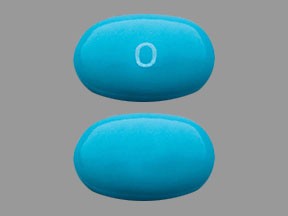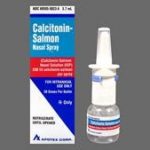
Contents
calcifediol
Impaired kidney function causes defective activation of vitamin D3 resulting in low blood calcium levels (hypocalcemia), high phosphorous levels (hyperphosphatemia), and overactive parathyroid glands (hyperparathyroidism) that produce excessive parathyroid hormone (PTH).
Vitamin D3 is essential for calcium and phosphorous absorption in the gastrointestinal (GI) tract, reabsorption in the kidneys, and bone mineralization. When calcium levels fall due to vitamin D deficiency, parathyroid glands secrete PTH to maintain a stable balance of calcium and phosphorous in the blood. PTH increases calcium absorption and phosphorous excretion in the kidneys, and mobilizes calcium from the bones, resulting in soft and brittle bone conditions such as rickets and osteomalacia.
Calcifediol, a synthetically manufactured drug with a chemical structure similar to vitamin D3, is used to supplement vitamin D deficiency caused by chronic kidney disease. It is converted to calcitriol, the active form of vitamin D3, in the kidneys. Calcitriol activates the vitamin D3 pathways, increases intestinal absorption of calcium and phosphorus, and reduces parathyroid activity.
Warnings
- Calcifediol treatment can result in excessive blood calcium levels (hypercalcemia) causing irregular heart rhythms, seizures, and calcification of blood vessels and soft tissues. Regular calcium level monitoring and immediate reporting of hypercalcemia symptoms are important. Severe hypercalcemia may require emergency attention.
- Hypercalcemia can increase the effects and toxicity of digitalis, a drug used to treat irregular heart rhythms and congestive heart failure. If calcifediol and digitalis are used concurrently, monitor the patient’s serum calcium levels and for signs of digitalis toxicity, especially during dose initiation and titration.
- Excessive vitamin D supplementation can suppress parathyroid hormone to abnormally low levels, resulting in progressive or acute hypercalcemia, hypercalciuria, hyperphosphatemia, adynamic bone disease, and an increased risk of fractures. Monitor PTH levels and adjust calcifediol dosage if needed.
QUESTION
What are the side effects of calcifediol?
Common side effects of calcifediol include:
- High blood calcium (hypercalcemia)
- High blood phosphorous (hyperphosphatemia)
- High blood potassium (hyperkalemia)
- High blood uric acid (hyperuricemia)
- Increase in serum creatinine
- Low red blood cell count (anemia)
- Contusion
- Inflammation of the nose and throat (nasopharyngitis)
- Bronchial inflammation (bronchitis)
- Cough
- Shortness of breath (dyspnea)
- Chronic obstructive pulmonary disease (COPD)
- Pneumonia
- Heart failure
- Degeneration and inflammation of joints (osteoarthritis)
- Adynamic bone disease
- Constipation
Call your doctor immediately if you experience any of the following symptoms or serious side effects while using this drug:
- Serious heart symptoms include fast or pounding heartbeats, fluttering in your chest, shortness of breath, and sudden dizziness;
- Severe headache, confusion, slurred speech, severe weakness, vomiting, loss of coordination, feeling unsteady;
- Severe nervous system reaction with very stiff muscles, high fever, sweating, confusion, fast or uneven heartbeats, tremors, and feeling like you might pass out; or
- Serious eye symptoms include blurred vision, tunnel vision, eye pain or swelling, or seeing halos around lights.
This is not a complete list of all side effects or adverse reactions that may occur from the use of this drug. Call your doctor for medical advice about serious side effects or adverse reactions. You may also report side effects or health problems to the FDA at 1-800-FDA-1088.
What are the dosages of calcifediol?
Adult:
Hyperparathyroidism
- Indicated for secondary hyperparathyroidism associated with vitamin D insufficiency in patients with stage 3 or 4 chronic kidney disease (CKD) and serum total 25-hydroxyvitamin D levels below 30 ng/mL
- Ensure serum calcium is below 9.8 mg/dL before initiating calcifediol
- Initial: 30 mcg orally every night
- Maintenance dose should target serum total 25-hydroxyvitamin D levels to 30-100 mg/mL, intact parathyroid hormone (PTH) levels within the desired therapeutic range, serum calcium (corrected for low albumin) within the normal range, and serum phosphorus below 5.5 mg/dL
Dosage Modifications
- Increase the dose to 60 mcg orally every night after 3 months, if intact PTH remains above the desired therapeutic range
- Prior to raising the dose, ensure serum calcium is below 9.8 mg/dL, serum phosphorus is below 5.5 mg/dL, and serum total 25-hydroxyvitamin D is below 100 ng/mL
- Suspend dosing if intact PTH is persistently and abnormally low to reduce the risk of adynamic bone disease, if serum calcium is consistently above the normal range to reduce the risk of hypercalcemia, or if serum total 25-hydroxyvitamin D is consistently above 100 ng/mL
- Restart at a reduced dose after these laboratory values have normalized
Dosing Considerations
- Monitor serum calcium, serum phosphorus, serum total 25-hydroxyvitamin D, and intact PTH levels at a minimum of 3 months after initiation of therapy or dose adjustment, and then at least every 6-12 months
- Patients with a history of hypercalcemia prior to initiating therapy should be monitored more frequently for possible hypercalcemia during therapy
Limitations of use
- Not indicated for secondary hyperparathyroidism in patients with stage 5 CKD or end-stage renal disease on dialysis
Pediatric:
Safety and efficacy not established
Overdose
- Overdose of calcifediol can lead to electrolyte imbalances including high blood levels of calcium (hypercalcemia) and phosphate (hyperphosphatemia), excessive excretion of calcium in the urine (hypercalciuria), and excessive suppression of parathyroid hormone (PTH).
- Overdose symptoms include constipation, reduced appetite, vomiting, dehydration, fatigue, weakness, and irritability.
- Calcifediol overdose is treated with induced vomiting and gastric lavage to eliminate any undigested drug, and general supportive and symptomatic care. Blood and urine calcium levels are monitored and the patient is evaluated for heart rhythm abnormalities from hypercalcemia.
What drugs interact with calcifediol?
Inform your doctor of all medications you are currently taking, who can advise you on any possible drug interactions. Never begin taking, suddenly discontinue, or change the dosage of any medication without your doctor’s recommendation.
- Calcifediol has no listed severe interactions with other drugs.
- Serious interactions of calcifediol include:
- abametapir
- apalutamide
- fexinidazole
- ivosidenib
- lonafarnib
- tucatinib
- voxelotor
- acetazolamide
- anastrozole
- cyclophosphamide
- arotrectinib
- ribociclib
The drug interactions listed above are not all of the possible interactions or adverse effects. For more information on drug interactions, visit the RxList Drug Interaction Checker.
Inform your doctor, pharmacist, or healthcare provider about all prescription and over-the-counter medications you use, as well as the dosage for each, and keep a list of the information. Check with your doctor or healthcare provider if you have any questions about the medication.
By clicking Submit, I agree to the MedicineNet’s Terms & Conditions & Privacy Policy and understand that I may opt out of MedicineNet’s subscriptions at any time.
Pregnancy and breastfeeding
- There are no adequate and well-controlled studies on the safety of calcifediol use in pregnant women; animal studies show it can cause fetal harm. Use calcifediol with caution during pregnancy only if potential benefits justify the potential risks to the fetus.
- Natural vitamin D3 is poorly excreted in breastmilk, however, supplementation may increase its concentration. Use with caution in nursing mothers and monitor the breastfed infant for calcium levels and hypercalcemia symptoms such as vomiting, constipation, weight loss, and seizure.
What else should I know about calcifediol?
- Take calcifediol exactly as prescribed, at bedtime. Swallow the capsule whole.
- Inform your physician immediately if you experience symptoms of hypercalcemia, which may include nausea, vomiting, constipation, loss of appetite, weight loss, increased thirst, increased urination, tiredness, and impaired cognitive function.
- You will need periodic lab tests during calcifediol therapy, follow up with your physician, and do not miss your appointments.
- Store calcifediol safely out of reach of children.
- In case of overdose, seek immediate medical help or contact Poison Control.
From
Healthy Resources
Featured Centers
- What Are the Best PsA Treatments for You?
- Understanding Biologics
- 10 Things People With Depression Wish You Knew
Summary
Calcifediol is a medication used to treat secondary hyperparathyroidism caused by vitamin D deficiency in patients with stage 3 or 4 chronic kidney disease (CKD). Common side effects of calcifediol include high blood calcium (hypercalcemia), high blood phosphorous (hyperphosphatemia), high blood potassium (hyperkalemia), high blood uric acid (hyperuricemia), increase in serum creatinine, low red blood cell count (anemia), contusion, inflammation of the nose and throat (nasopharyngitis), bronchial inflammation (bronchitis), cough, shortness of breath (dyspnea), chronic obstructive pulmonary disease (COPD), pneumonia, heart failure, degeneration and inflammation of joints (osteoarthritis), adynamic bone disease, and constipation. Consult your doctor if pregnant or breastfeeding.


